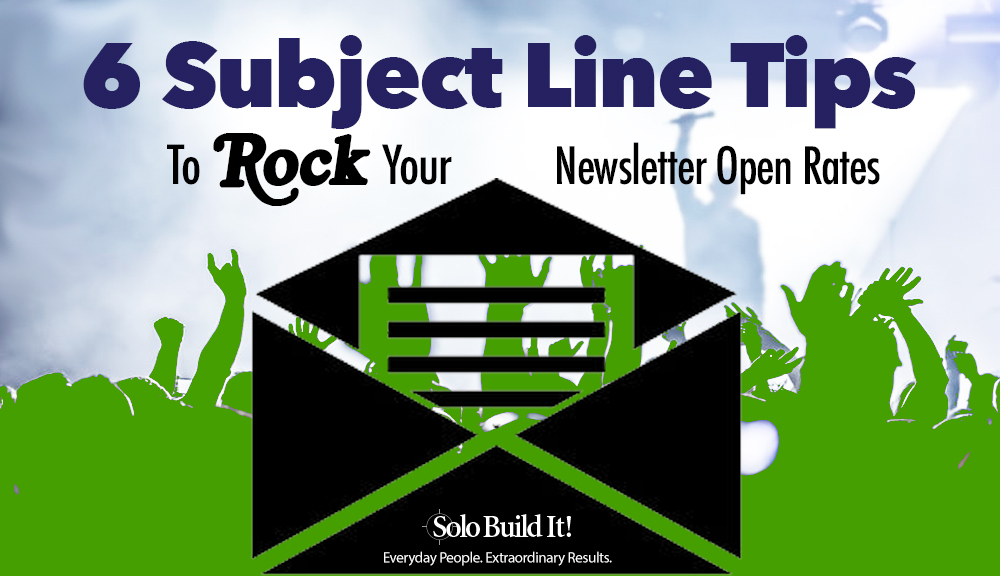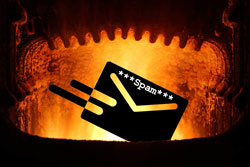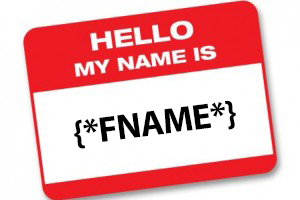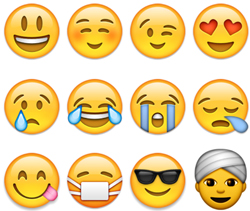
If you think your inbox is full, imagine how Santa must feel at this time of year.
All those children — of all ages — wanting him to take note of their particular wishes.
Santa — a year’s supply of muffins, please!
Santa — my unicorn escaped and I need another one, NOW!
Santa, Santa — look this way. — No Santa, over here, look over here!…
What to do? How to know which is priority? How to get through it all without losing his mind?
What about sending them all to the trash? “Hmmmm,” thinks Santa, “that’s one way out of it…”
 How can we help Santa not ignore our email?
How can we help Santa not ignore our email?
The answer lies in how we write the most important part of that email.
The subject line.
Wishing there was some fairy dust you could sprinkle upon your subject lines to make them more compelling? Check out these AI writing tools (AI = Artificial Intelligence).
And it’s not only Santa who needs help at this time of year. Those people who receive our newsletters struggle, too.
See if you recognize this…
You spend hours researching great information and finding the most attractive images. You put the whole thing together in a well-worded document, targeted to your readers.
Feeling rather satisfied, you press “Send,” sit back, and wait.
And wait. And…
Three days later, you’re sobbing quietly into your hot chocolate.
Only 9% of your subscribers have opened your lovingly crafted email. A pitiful 3% have clicked through to your website, and no one at all has bought a single product.
Why? After all, people must have been interested when they chose to sign up to your newsletter. You didn’t force them.
So what’s changed for your subscribers? And what can you change for better results?
First Off, Forget Santa
No, I’m not saying there’s no such thing as Santa, but…
If you aim to analyze your open rates — the number of times your masterpiece is opened — without driving yourself to an early grave, you first need to be realistic.
If you’re optimistic (and new to writing newsletters), you might think it’s fine to aim for an open rate of around 80% — perhaps even 90%.
That’s a commendable target, but you’ll be disappointed.
One of the larger email providers, MailChimp, analyzed its database and found a newsletter open rate of 20.81% to be standard. Percentages varied between different industries though, from 14.92% (“Daily Deals”) to as high as 27.35% (hobbies)(1).
And clicks on links from your newsletter to your site (or a third-party site) of around 2% to 5% will not be unusual.
 Why so low? Volume, pure and simple. Your valued customers simply receive too many emails to deal with.
Why so low? Volume, pure and simple. Your valued customers simply receive too many emails to deal with.
In 2017, 269 billion emails were sent per day. That figure is projected to rise to 281.1 billion by the end of 2018(2).
You probably feel that most of them land in your inbox.
So forget the 90% open rate dream. Santa may be able to deliver toys to every boy and girl — but most of the emails we mortals send will remain unopened and unloved.
Let’s look at that in more detail.
Step 1: Go Blitz ’em!…
No, not the reindeer…
Take a moment to think about your own email behavior. When you open your inbox in the mornings, what do you do?
Chances are you blitz it.
Be honest. You scan down the list of emails looking at the subject lines, don’t you? If you’re anything like me, you’ll immediately delete all those that appear to be spammy or promotional, or that just don’t sound terribly interesting.
Among them are likely to be newsletters you’ve signed up for and forgotten about. Or signed up for but just don’t have the time to read. Or signed up for and thought “why did I do that?”
You’re left with the few that are from friends and possibly one or two newsletters that catch your eye, or that you know offer value for time spent.
And you do all that without even looking at the content.
You’re not alone: as many as 47% of email recipients open an email based on nothing more than the subject line — and a scary 68% report email as spam based on the subject line alone.
Which is why the subject line is so critical.
So it’s important to craft a subject line that is as enticing as eggnog on Christmas morning.
Would you open this one, for example?
The High-Bouncing Lover
No? You’d be missing out. It’s what F. Scott Fitzgerald called The Great Gatsby, before someone told him “The High Bouncing Lover” just didn’t cut it.
Words matter.
So go ahead. Go on over to your email box now. Take a look. Which emails would you open and read — and why?
Make a note of what appeals to you. Take some time to think about why that is. Is it the person sending it? The promises the subject line makes? The words it uses? Or something else?
Step 2: Silver Bells: Make Your Subject Line Ring True!
First, a word of advice.
Lose the cutesy.
AWeber (another large email provider) analyzed their subject line data and discovered that, whatever the season, straightforward subject lines outperform more creative ones by an average of 541%.
No, that’s not a Christmas fairy tale.
541%.
Why? Think back to your own inbox. Your time is precious, and you have 100 new emails to work through.
You scan the subject lines quickly — you need to know instantly what the content will be. You simply don’t have time to work out what they mean.
So, forget the puns. Skip the wit. Leave the jokes for the Christmas crackers.
Subject lines you may consider boring convert the best as long as they convey the value of what’s inside your email.
Your reader needs to know what to expect. What gifts are hiding underneath the newsletter Christmas tree.
Not actual gifts, unless of course you’ve decided on a giveaway. The gift of the benefits you will give your readers when they open your message.
Think of your subject line as the wrapping. Wrapping a gift takes time. It reflects the thought you’ve put into what’s inside.
Take the same kind of trouble with your emails. Make both the “wrapping” and the content the best they can be.
If you don’t? Good luck with getting your readers to open your emails in the future!
A Word About Clickbait
You know the kind of thing…
Santa’s sleigh spotted over Chicago. You won’t believe what Rudolph did next!
 Clickbait has one purpose: to manipulate the reader. It wants the click, without offering the benefit. The content is never as juicy as the subject line promises.
Clickbait has one purpose: to manipulate the reader. It wants the click, without offering the benefit. The content is never as juicy as the subject line promises.
Could you create a clever clickbait subject line that does get the click? Possibly. But does it get the right kind of click?
Nope. When clickbait was first heard of, it had a novelty value.
Now? At worst, the readers you want, those most likely to stick around, will not appreciate being manipulated. At best, they’ll feel cheated if your content doesn’t match the clickbait-y promise. They’re more likely to perceive it as spam, or to find it intensely irritating.
And your “clever” subject line may end up in the spam folder before anyone ever sees it, anyway.
Just. Don’t.
Step 3: All I Want for Christmas…
Practically speaking, what do your subscribers want to see in that all important subject line?
Let’s look at two different scenarios.
Welcome newsletters: The first email your subscribers receive from you is likely to be a “Welcome to my newsletter.” Keep the subject line simple. Think, too, about what your most wanted response is. Encourage an action. So for example:
- Welcome to [newsletter name] — let’s get started.
- Thank you for joining my newsletter — here’s what’s next.
If you have given away a freebie — known in marketing circles as a “lead magnet” — you may want to refer to that:
- Welcome to my newsletter — did you get your [whatever the freebie is]?
And follow up in the body of the email with information about how that freebie can be used. How it will change your subscriber’s life.
Regular newsletters: These are different. Your readers now know you a little. They have stuck with you for at least the first couple of weeks.
Now you need to appeal to their feelings.
Why? Because feelings drive actions, and an action — opening the email — is what you want your subscribers to do.
That emotion might be fear, pain, sadness, anxiety, happiness, contentment — whatever fits with your main newsletter content.
 The most compelling emotion? Hope.
The most compelling emotion? Hope.
Put yourself in your subscriber’s shoes for a moment. She’s sitting at home, staring out the window, wondering how she can ever achieve that goal… She has no idea how to get from where she is now to where she wants to be.
The goal will, of course, depend on your niche. It may be learning to quilt / knit / paint / write / cook / train a dog.
Or perhaps your newsletter subscribers are worried about how to get better at managing money / anxiety / phobias / migraines / weight.
Or where to visit / eat / find a beach in San Francisco / Anguilla / Scotland / Italy…
You get the picture. You identify where your subscribers are coming from. What problem they want you to solve. What keeps them awake at night. What their worst fear is.
Or their most fervent dream. What they want to achieve most in the world.
What you’re offering in your newsletter is hope. Hope is the emotion most likely to trigger action. So wherever you can, use it.
How are you planning to help them get there? Appeal to your audience’s hopes and dreams. Help them visualize what their life could be like, with your help.
Vary your emotional call, too — don’t just use hope. Some other emotions that work are…
- Self-interest: speak to a direct benefit of your newsletter for your subscriber. How is this issue helping make her life better?
- Urgency: MailChimp reports(3) that words implying time sensitivity (“urgent,” “breaking,” “important”) increase open rates.
- Curiosity: Ask a question, which you then answer in your newsletter. Or write a line that arouses interest by sounding unusual. Remember though: no clickbait. Keep it simple, something your reader will instantly understand and value.
- Vanity: Appeal to the part of your subscriber that wants to look cool / beautiful / fashionable. Rapha, a high-end brand of cyclist clothing, does this simply and well: “Gift inspiration for the discerning cyclist.”
- Fear: What is your subscriber’s current biggest problem? Address it — always making clear you can help. For example: “School holidays? 10 activities inside.”
- Fear of missing out: Sales, discounts and special offers work well in subject lines, but craft them carefully so as not to end up as spam.
And while the word “free” can end up in spam, using “freebie” has a much more positive impact on open rates(4).
- Excitement: Create a buzz with subject lines like “My new e-book / course / monthly printable is here.”
- Pain: We’ve looked at this one already — telling your subscriber you understand and can help with her pain is a big bonus.
If you’re in a niche that you don’t think has any particular visitor pain points, try to think wider. Again, put yourself in your subscriber’s shoes. Consider, for example, Pizza Hut’s subject line for a special offer: “Feed your family without breaking the bank.”
- Sense of achievement: Give your reader the sense that s/he will learn something valuable from your email.
This kind of subject line is particularly powerful when linked to a number. It makes the learning seem both tangible and doable. For example, fill in these blanks: “[number] lessons [we] learned by [action we took].” Which may turn into, “5 lessons we learned by getting up an hour earlier.”
We’ve talked about what emotions you can use to good effect in your emails, but what about words that Santa doesn’t like?
Step 4: Naughty or Nice? Things Likely to Trigger Spam Detectors
The subject line can be the difference between emails ending up in the inbox or the folder of doom, otherwise known as the dreaded spam filter.
 The last thing you want, having spent hours lovingly crafting your newsletter, is for your work of art to disappear down Santa’s chimney, never to be seen again. Avoiding words that trigger spam filters can dramatically increase the odds of ending up in your reader’s inbox.
The last thing you want, having spent hours lovingly crafting your newsletter, is for your work of art to disappear down Santa’s chimney, never to be seen again. Avoiding words that trigger spam filters can dramatically increase the odds of ending up in your reader’s inbox.
Take a moment now to look through your own spam email folder. Can you identify problem words or phrases? It can be a few minutes well spent, helping you create your own naughty list of “absolutely avoid” words.
Here are some common examples of spam, collated mainly from information offered by email providers MailChimp and AWeber.
Font and punctuation.
- Using more than one exclamation point (!!) in the subject line will see Santa leaving you pieces of coal.
- More than two punctuation marks, for example, a comma (,) and a period (full stop) (.), will see you joining the Elf on the naughty shelf.
- Single apostrophes (‘) are viewed as naughty list-able.
- Red font and / or all caps are not liked. Leave the red to Rudolph.
- “Re [subject]” and “Fwd [subject],” particularly in a first email, are considered spam. They’re recognized as manipulative methods marketers use to make recipients think — wrongly — they’ve received previous emails.
Words and phrases.
Perhaps not surprisingly, words and phrases specifically related to financial gain and weight loss are the two most frequent triggers of spam filters.
But they’re not the only culprits. Here’s a selection of words our friends at MailChimp and AWeber advise to use with caution (or not at all):
- Free (but see Step 4, “Fear of missing out,” for use of “freebie”)
- Affordable
- Opportunity
- Save
- Additional / extra income
- Apply now
- Work from / at home
- Hello
- Dear friend
- Remove
- Lose weight
- Cures / reverses… [acute illness / baldness / snoring / wrinkles etc]
- Subscribe / unsubscribe
- Weight loss
- This isn’t junk / spam
- Do you want / wish
- Interestingly, the word “Newsletter” used in subject lines was found to cause an 18% drop in open rates.
Remember: your newsletters are not about the hard sell — they’re about building relationships. Your subject lines should never fall into these spam traps.
Step 5: Don’t Forget to Leave Cookies and Milk, and a Carrot
 What other parts of the subject line can provide that carrot which means the subscriber will be more than tempted to open?
What other parts of the subject line can provide that carrot which means the subscriber will be more than tempted to open?
Length
Ever heard of the piece of string theory? It goes like this…
Question: How long should a subject line be?
Answer: How long is a piece of string?
Not terribly helpful, is it? But the fact is — no one can agree.
- Litmus and AWeber recommend no longer than 50 characters.
- Lifecycle Marketing recommends up to 20 characters.
- MailChimp suggests anything between 4 and 15 characters.
In reality… it depends. Every industry is different.
Here are the most important things to remember:
- Email messages opened on a mobile device have nearly doubled over the past 5 years, while emails opened on a web browser have dropped 26% in that same timeframe(5).
- According to a report of email use in the US(6), 70% of all emails are opened on a mobile device — a rise from 66% in 2017.
What does all that mean in practice?
It’s safe to assume that at least a proportion of your list uses a mobile device to view your newsletter. If you take a look at emails on your own mobile device, you’ll see that screen space is small.
So aim for short, precise subject lines. Again, advice varies, but the general agreement is that to optimize specifically for mobile you should keep it under 30 characters — nearer 20 is better.
And it’s generally agreed that more than 50 characters are likely to have your email disappear into that dreaded spam folder.
There’s a tool for testing how your subject line will look on different devices, here.
Remember: your space is limited, so make every word count.
To Capitalize or not to capitalize?
AWeber report an interesting analysis by John Oszajca(7), who set up an email split test. A split test sends two versions of the document to two or more randomly selected groups.
Oszajca created two identically worded versions of a promotional email for his upcoming “Copywriting for Musicians” workshop.
The first version capitalized the first letter of the subject line and the first letter of the second clause.
The second used all lower case letters — like this…
- Subject line #1: Last chance – This ends tonight
- Subject line #2: last chance – this ends tonight
The second version — all lowercase — had 35% more opens.
What does that tell us?
Not a lot. Each niche will be different. Subscribers who are teachers of English aren’t likely to be impressed by all lowercase characters, while a list of up-and-coming YouTube vloggers may not care.
The real lesson here is the need to know your audience — and to test if you’re not sure.
“Santa baby” — personalizing emails
 According to a 2014 study by Experian Marketing Services(8), using a subscriber’s first name in the subject line increased open rates by over 29% across all industries.
According to a 2014 study by Experian Marketing Services(8), using a subscriber’s first name in the subject line increased open rates by over 29% across all industries.
For some, notably services (think dentists, counsellors, plumbers, etc.) and travel-related niches, that figure was as high as nearly 42%.
And yet in 2018, using first names has become the norm rather than the exception. A study by AWeber found it has lost much of its effectiveness.
So what can you do to get ahead of the crowd?
Use first names by all means — most providers enable this by adding a simple snippet of code to the subject line. But think wider. Think segmentation. Tailor the content of your messages according to interests, wants and needs.
And use a subject line that’s tailored to that content.
Segmenting lists is beyond the scope of this article, but in crude terms it goes something like this…
- Mary Jane signs up to your newsletter about cycling.
- In a subsequent email, you ask Mary to fill in a simple survey asking what her favorite type of cycling is.
- She ticks the “road racing” box.
- Mary Jane is tagged as a “road” customer in your email list.
- You write an article about the latest trends in the lightest road cycling gear.
- Mary receives an email with the subject line: “10 lightweight road tops under $15” and is instantly interested.
Remember: Your newsletter should aim to speak directly to a customer. Personalizing to this extent may seem like a lot of work — but could pay dividends.
Using Emojis
 You know emojis — those irritating little pictures you see dotted into every document, every article, every email subject line.
You know emojis — those irritating little pictures you see dotted into every document, every article, every email subject line.
Why are they popular? They can make a subject line more interesting, more colorful, more young-at-heart.
Do they work? According to Experian’s report, using emojis in your subject line can increase open rates by as much as 45%.
But be careful. An overload can be more annoying than useful.
And different browsers show different versions of emojis — some don’t support them at all. That’s when the little blank box appears…
So again, it’s important to test.
Want to know how how emojis look on different browsers? Take a look at this link.
What’s their advantage, if they may mess up your message?
With screen sizes getting smaller (think Apple Watch!) emojis are being used more often to pack more information into shorter messages. They’re fun, compact and expressive — as long as they’re related to the subject. Using random emojis because you like them won’t work.
And they don’t suit every niche. How would your target audience receive them? If your niche is professional report writing, probably not very well. Younger audiences tend to prefer them to older.
Are some more likely than others to encourage a click? You can bet on it. MailChimp has a list of its most popular subject line emojis, here.
Remember: The answer to most of the “does it work” questions is the same: test, test, test.
Step 6: He’s Making a List, He’s Checking It Twice!
There are two practical issues you need to check, one before sending and one after.
Before: Is your subject line free from errors of spelling, punctuation and words likely to attract spam filters?
Most reputable email providers will give you a “spam score.” Check to make sure yours is good before pushing that “send” button.
Once you’ve done that — let it go, let it go, let it go!
After: After you’ve sent a few newsletters, take a look at the statistics your email provider offers. What’s working? Which emails are being opened, and why?
Study those that have a good open rate. What do they have in common?
Do the same for those that are poorly received. What is it about them that your subscribers took exception to?
Don’t be frightened to make mistakes. The important thing is to learn from them.
And finally…
Remember: there is always room for improvement, for all of us. Your newsletter is critical in getting return visitors to your website or blog. And your loyal subscribers are the people who are likely in the long-term to become your loyal customers.
The subject line is the magic key that will unlock that newsletter door and lead them through to the other side. It’s worth spending time on.
I have one simple wish for you this holiday season:
May your days be merry and bright — and may all your newsletters give delight!
These regular events deal with developing one area of expertise at a time, based on what SBIers decide they’d like to learn. Typically, each “Step” is covered on a separate day, to allow time for reading and actions — and to avoid overwhelm.
Recent events have covered newsletter creation (of which this article formed a part), writing excellent product reviews, (which gave rise to these articles), improving conversion rates, how to effectively monetize, GDPR-readiness, mobile-friendly optimization, crafting a Most Wanted Response and developing unparalleled content — to name but a few.
Run by our experienced, knowledgeable staff and coaches, each one aims to take the SBIer, step-by-step, to a new level of understanding in order to achieve best practice and, consequently, even higher levels of success.
Solopreneurs get to share their own knowledge and experience, to learn from others and to support and encourage each other as the Challenge progresses.
Solo Build It! — where you may be a “solo,” but you’re never alone!
Cath Andrews
Latest posts by Cath Andrews (see all)
- Start a Passion-Based Business and Live Your Dream - February 1, 2023
- What Do You Say When Their Eyes Glaze Over? - December 20, 2021
- How to Monetize Your Email List in 5 Simple Steps - October 26, 2021

